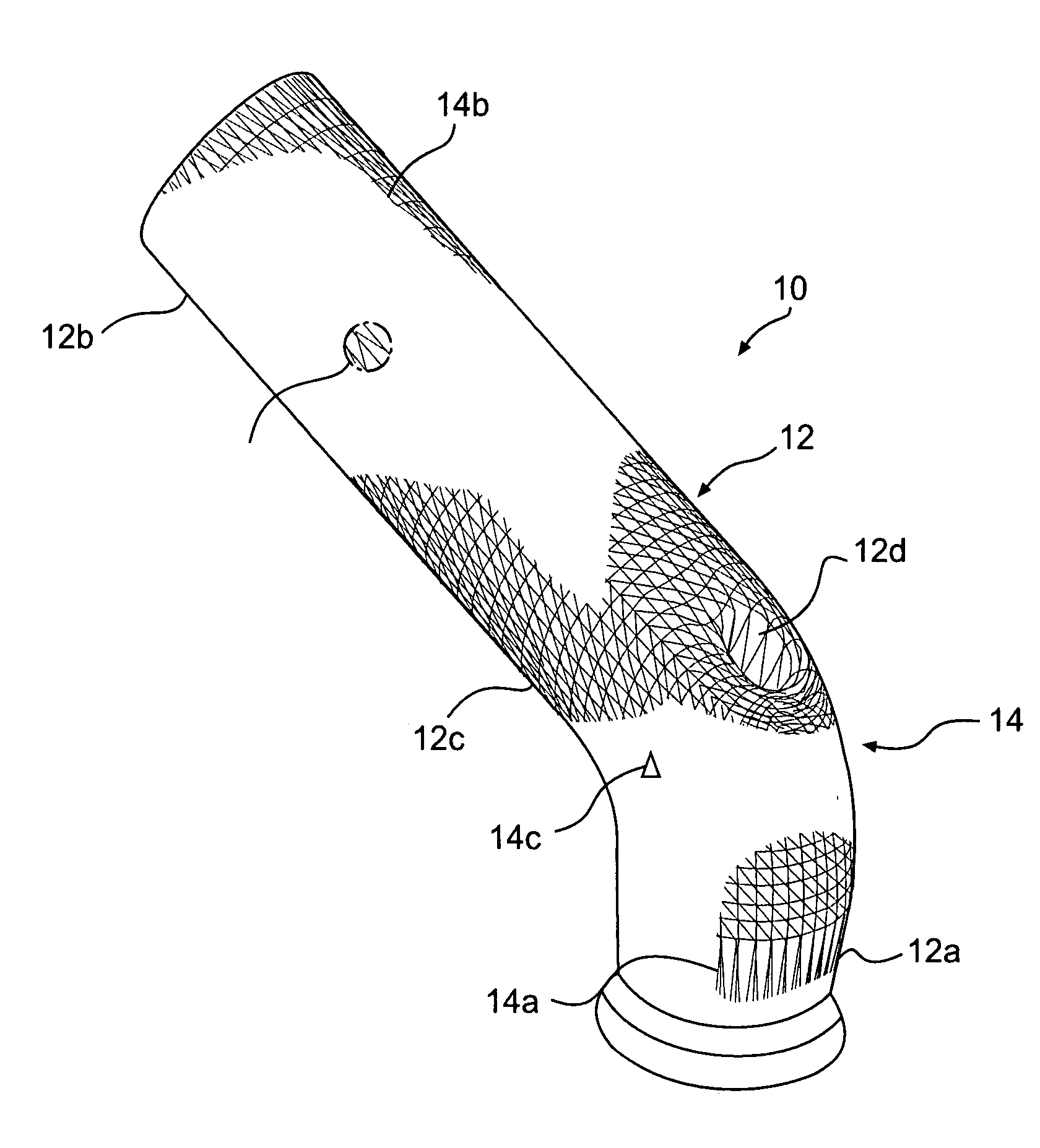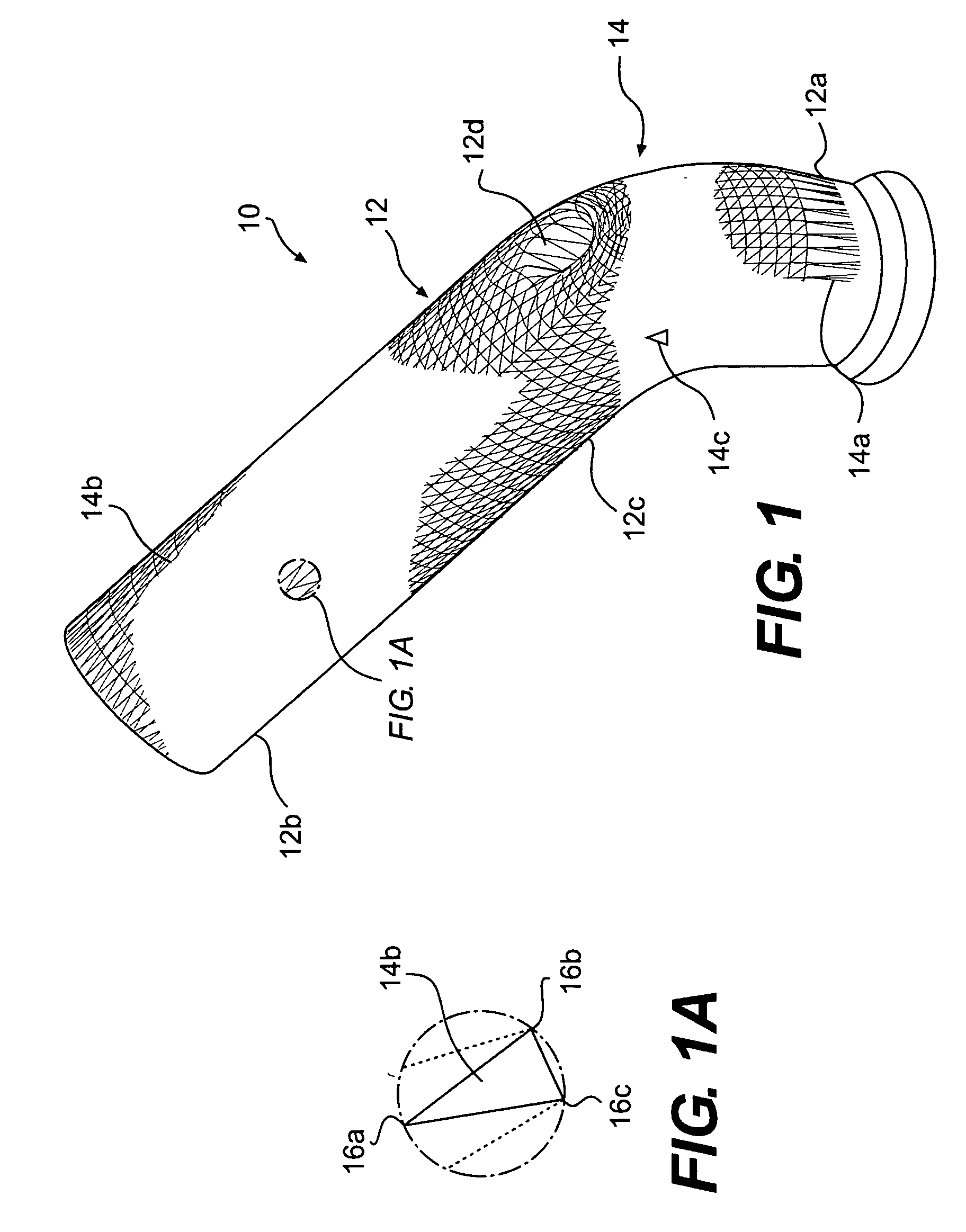Method and apparatus for automated grid formation in multi-cell system dynamics models
a multi-cell system and dynamic system technology, applied in the field of computer modeling dynamic systems, can solve the problems of most user-intensive, inaccurate representation of original geometry, and types of problematic cells
- Summary
- Abstract
- Description
- Claims
- Application Information
AI Technical Summary
Benefits of technology
Problems solved by technology
Method used
Image
Examples
Embodiment Construction
[0021] In one aspect, a method for forming a fixed geometric grid for a fluid dynamic system multi-cell computer model, where the system has one or more surfaces, includes representing the system surfaces by an array of contiguous polygons. As embodied herein, FIG. 1 depicts a header pipe 10 for an internal combustion engine (not shown), where the surface 12 of pipe 10 is “triangulated” for use in forming a model of pipe 10. That is, each part of surface 12 that serves as a boundary for the fluids (gases, liquids, etc.) is covered by an array of individual triangles 14. However, the present method is not limited to the use of triangle-type polygons to represent the system surface.
[0022] The individual triangles of array 14 can be of different sizes, such as triangles 14a and 14b, which are elongated in the relatively straight cylindrical surface sections 12a and 12b of pipe 10, and triangles that are more compact, such as triangles 14c in the curved surface portion 12c of pipe 10. ...
PUM
 Login to View More
Login to View More Abstract
Description
Claims
Application Information
 Login to View More
Login to View More - R&D
- Intellectual Property
- Life Sciences
- Materials
- Tech Scout
- Unparalleled Data Quality
- Higher Quality Content
- 60% Fewer Hallucinations
Browse by: Latest US Patents, China's latest patents, Technical Efficacy Thesaurus, Application Domain, Technology Topic, Popular Technical Reports.
© 2025 PatSnap. All rights reserved.Legal|Privacy policy|Modern Slavery Act Transparency Statement|Sitemap|About US| Contact US: help@patsnap.com



